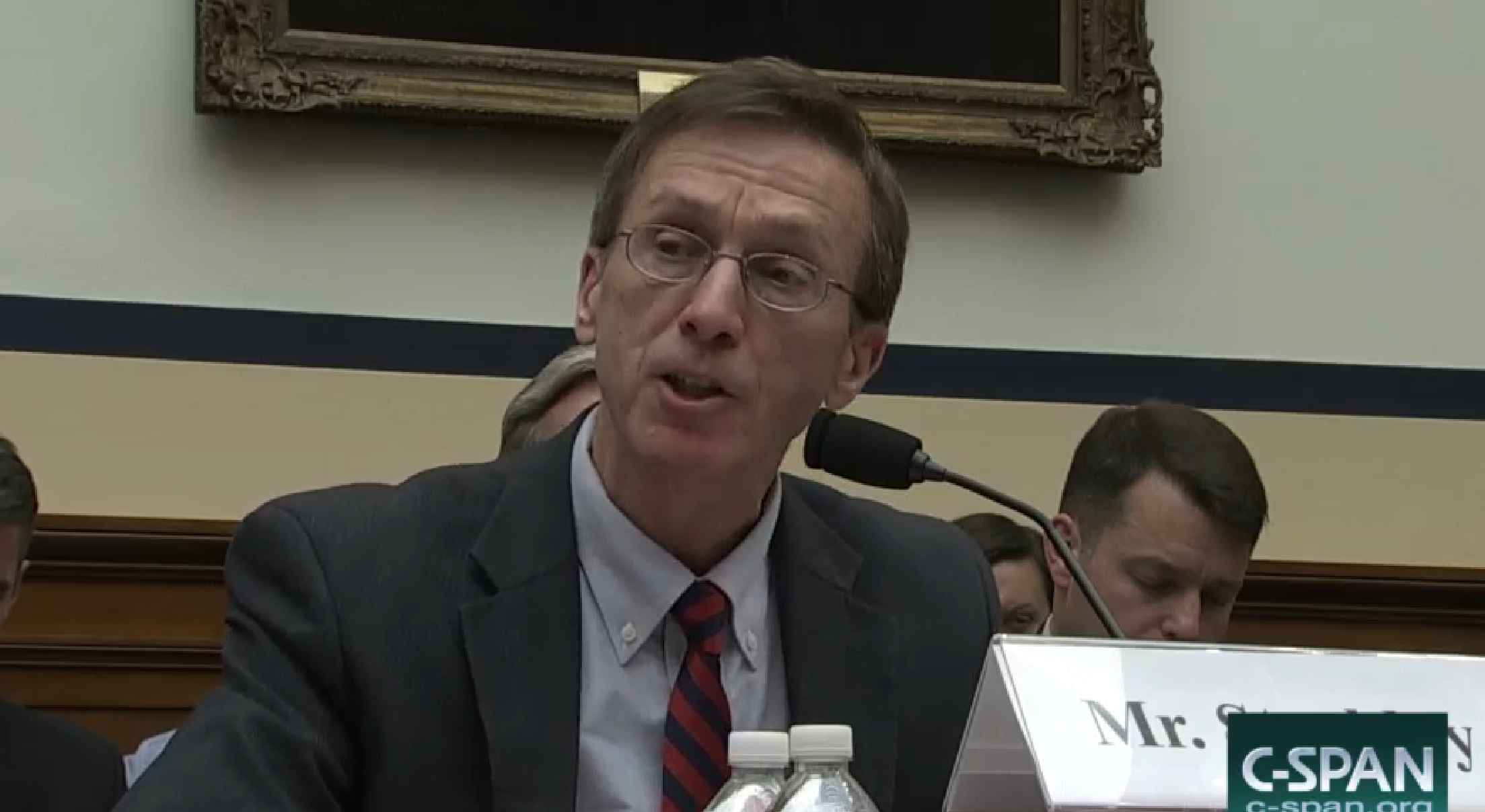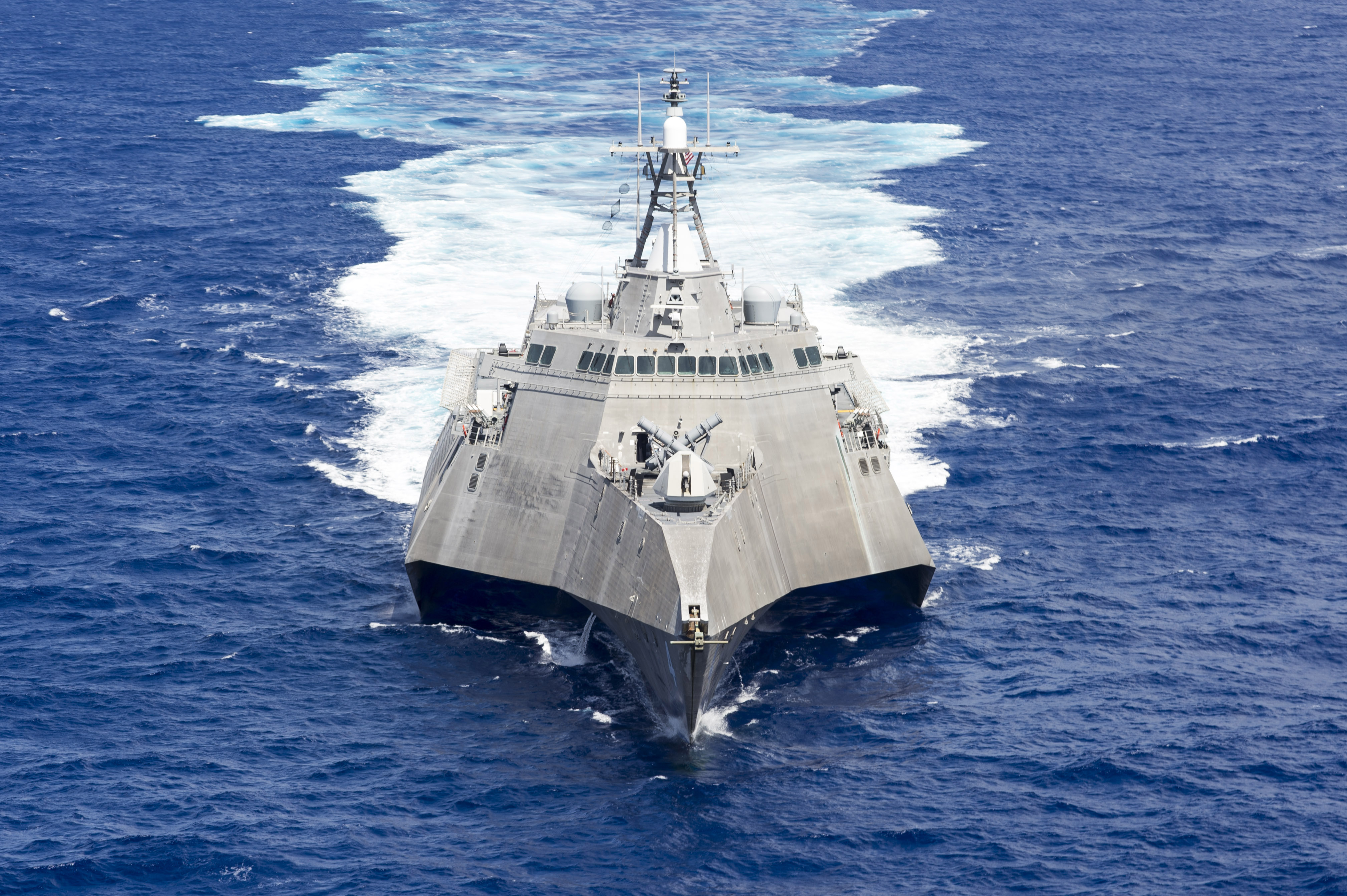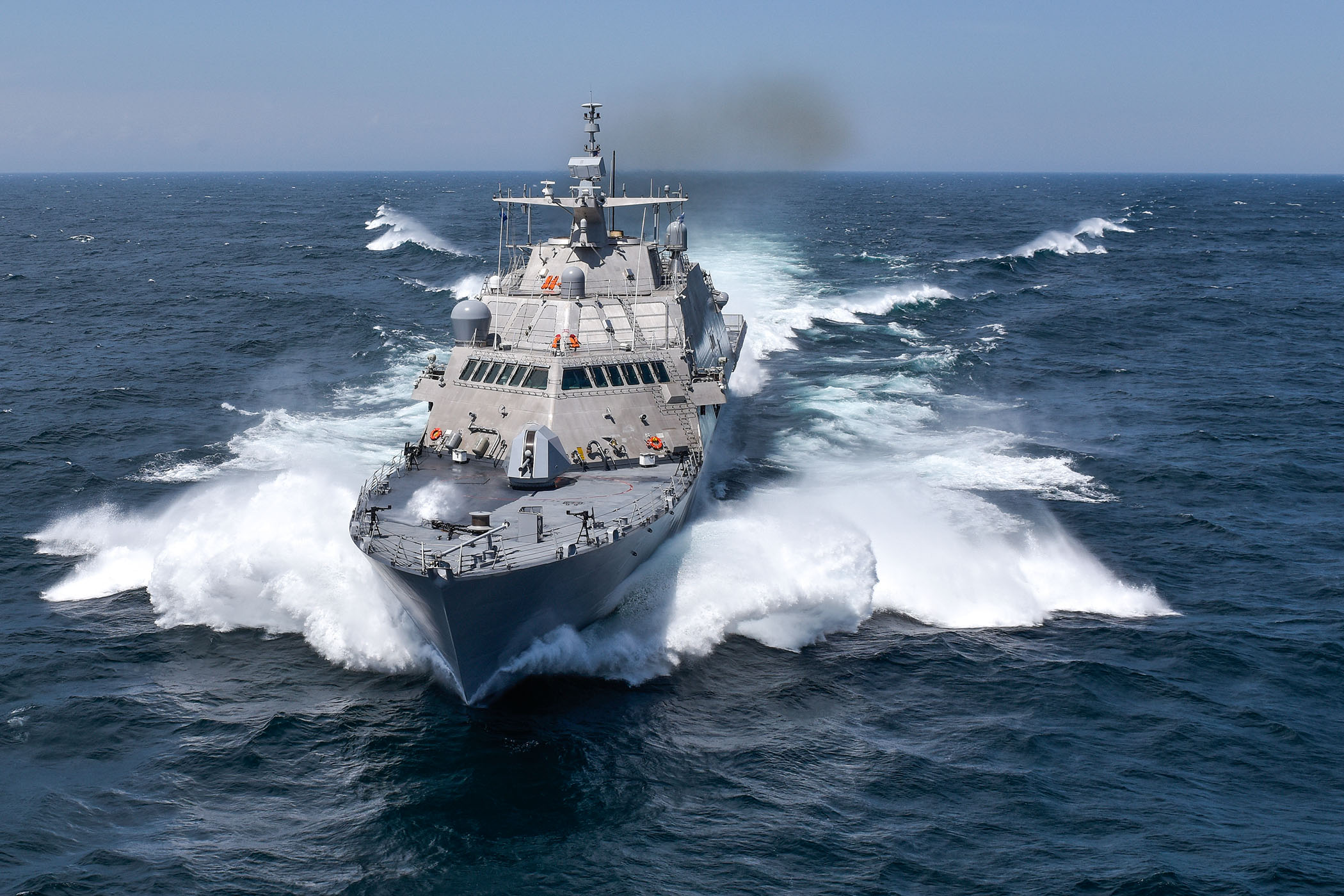
The Navy defended its plan to move heel-to-toe from its Littoral Combat Ship into the LCS-based frigate program despite a Government Accountability Office report released today that suggested the frigate program could be slowed to await more details about the frigate’s design and cost.
The author of the GAO report, Michele Mackin, in her testimony to the House Armed Services oversight subcommittee today in a hearing on the LCS program leveled a range of criticisms at the ship class – five major but unrelated engineering casualties over the last year, concerns about the Navy paying for repairs that stemmed from flaws in ship design or construction, uncertainty about the cost of the frigate upgrade, talk about awarding a block buy contract for frigates before the new ship’s capability is proven, among them.
In sum, Mackin said, the Navy should slow down its transition to the frigate.
“Our work has shown that both LCS shipyards are running quite a bit behind in delivering ships already under contract. Backlogs are many months long and up to a year or more in some cases. So the bottom line here is that both shipyards will be building LCSs for years to come, at least into 2021 at this point. So there’s no schedule imperative to add frigates to the pipeline right now,” she said.
“There’s an opportunity here to not repeat the mistakes of the past. Continued concerns about the capability of LCS, testing that’s years away from being complete, unknowns about the frigate and production backlogs at the shipyards are all factors that need to be taken into account. This potentially $9-billion investment can wait until more is known about what the taxpayers are being asked to fund.”
After a contentious hearing – the second in two weeks – Navy acquisition chief Sean Stackley told USNI News that the service could not delay its frigate upgrade plans without interrupting continuous production, which would lead to laying off skilled workers at the yards and risking higher cost and poorer quality.
“If the shipyard doesn’t have a backlog, it’s out of business,” he said, adding that the GAO report’s language about shipyard backlogs shows “a misunderstanding of serial production.”
“Her comment in terms of the timeframe is that when you award the last ships in 2017 … you still have work to take you to the 2020, 2021 timeframe. Well that’s true, because you’re going to order material and then you’re going to build the ship,” Stackley said.
“What that means is, the day you award that last ship, you’re going to start laying people off, and you’re going to lay them off until they’re gone. You’re going to lay them off in the sequence in which you build the ship. So when you are going to build another ship, if you are going to stop production and build another ship, you’ve lost your skilled labor and you’ve got to rebuild it. Where that has occurred [in previous shipbuilding programs] we have experienced extreme cost delays and quality issues. So that is something that we as a Navy, we as a nation do not choose to do. We do not want to lay off skilled labor and then try to rehire them a couple years later to restart production.”
Asked to confirm that frigate procurement needed to begin heel-to-toe as LCS procurement ends, Stackley replied, “unless you want to put the shipyard out of business.”

During the hearing, Mackin and oversight subcommittee ranking member Rep. Jackie Speier (D-Calif.) questioned whether an LCS-based frigate was even the right concept the service’s next iteration of a small surface combatant.
“If we’re now taking the LCS and turning it into a frigate, wouldn’t we be better served to design a frigate that meets what our needs are?” the congresswoman said.
“We always had problems with the LCS because we’re bumping up against weight restrictions, we always had problems with the fact that there’s not adequate crew on the ship, and we have a hull that’s made out of aluminum that gets pierced easily and has been damaged in a number of settings. It seems to me that maybe we should go back to the drawing board and build a frigate that we want as opposed to superimposing it on an LCS frame that appears to have many problems.”
Stackley replied that the Navy spent a year in 2014 conducting an analysis of alternatives to answer that very question.
“We worked with the fleet, we worked across the design community, we worked with the Joint Staff, we worked with the CNO (chief of naval operations’) staff and we reviewed existing designs – U.S. and foreign – frigate designs, as well as considered a clean sheet,” he said.
“We reviewed all the alternatives, looked at the range of capabilities, the fleet weighed in in terms of their priorities in terms of the capabilities, had to consider the missions that the ship would perform in and had to consider things like cost and maturity and risk. And out of all of that, in that review that was conducted with OSD (the Office of the Secretary of Defense), with the Joint Staff, we invited review by committee staffs as well – out of all of that we landed on … the modified LCS using the existing [anti-submarine warfare] and surface warfare capabilities we have.”
When Speier asked Mackin to weigh in, though, the GAO representative said the AoA was conducted in a “limited time” and that “the minor modified LCS, which is now the frigate, was the least capable option that the study team assessed and did not meet all the fleet’s needs. Cost was a big driver in deciding to go with the minor modified LCS, but another big driver was that they did not want to disrupt the workload to existing LCS shipyards, so that was also a factor in addition to cost.”
“I would not agree with that, for the record, ma’am,” Stackley jumped in. “For the record, the disruption to the shipbuilders, that is important. But the decision-makers in that included the CNO, first and foremost. The CNO, first and foremost, is less concerned about the disruption to the shipyards and more concerned about bringing capability to the fleet. And that was the priority that he placed in terms of the ultimate recommendation that went forward.”
Speier retorted, “Mr. Stackley, I do not want to engage in a discussion on this right now.” She said her priority is to ensure “we are not providing sweetheart deals to the shipbuilders for not providing us ships at the outset that are capable of doing the job that we contracted for.”

Additionally, the congresswoman and the GAO director of acquisition and sourcing management slammed the Navy for the number of major engineering casualties over the past year and the fact that the Navy had to pay some of the bill for repairs they say the shipbuilder should have paid.
During the hearing, Stackley explained the five engineering casualties in detail, noting that two were crew errors, two were deficiencies in ship construction and repair, and one was due to ship design.
“The Navy has conducted formal engineering reviews and command investigations to assess the root causes, and corrective action for each of these casualties are in action,” he said. In the case of the design issue, “a deficiency in the new propulsion gear on the Freedom variant resulted in the gear’s clutch failure. The shipbuilder has been responsive with the manufacturer to correct the design, and we are currently testing this correction. The shipbuilder and manufacturer are being held accountable for these corrective actions.” Where the shipyard was responsible for construction and repair deficiencies, the yard and the Navy worked together to improve procedures to avoid future engineering casualties.
“Across the board we are raising the level of engineering and design discipline on this new ship class, that of zero tolerance for departure from standards,” Stackley said in his opening remarks.
“In this vein, the Naval Sea Systems Command has initiated a comprehensive engineering review of LCS propulsion systems and will make their findings available to this subcommittee upon their completion.”
Stackley told reporters after the hearing that he stands by the Navy’s contracting setup and the warranty clauses within the ship construction contracts. For the LCS program, the Navy uses a “fixed price incentive” contract structure that includes a target cost that the contractor is guaranteed to be paid; a shareline, where costs above the target are split between the Navy and the contractor; and a ceiling, above which any costs are shouldered solely by the contractor. Stackley said the LCSs have a one-year warranty period, and any problems that arise during that time that are the shipbuilder’s liability are paid for either on the shareline or by the contractor if it pushes the total ship cost above the ceiling.
During the hearing, Mackin took issue with the fact that the Navy in effect could be paying for some of the repairs resulting from shipbuilder deficiencies, whereas the Coast Guard uses a contract structure that makes the shipbuilder pay for any repairs during the warranty period. Stackley told reporters afterwards that the Coast Guard uses a “firm fixed price” contract setup that costs more upfront but puts all the responsibility for warranty period repairs on the shipbuilder.
“We’ve reviewed this over and over again with OSD and with other organizations trying to drive down cost for the government, trying to properly incentivize things like quality and performance, and at the same time deliver capability in the most affordable manner,” Stackley said, insisting that the current LCS contract structure is the fairest setup for a ship class in serial production.





